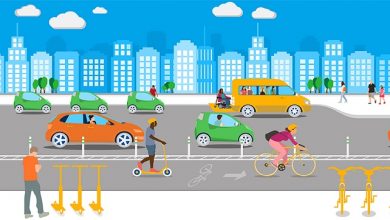Why do you need to center ‘the choice of hardware (IoT device)’ on user and operator experience in your Shared Mobility service?

How critical is technology’s role in a successful shared mobility (car/bike/moped share) operation? As an operator, should one invest in a reliable hardware (IoT device) and focus on operations? Seems obvious when we put it that way. Here are a few handy tips on what you should consider to help you select or validate if what you have is operations-ready.
The World Economic Forum defines ‘Shared Economy’ as the focus on the allocation of underutilized assets, monetized or not, within a community or group of users in ways that improve efficiency, sustainability and the overall community. Shared mobility is a considerable slice of this pie and has seen success in many modes (cars, bikes, mopeds, and vans/micro-transit). Technology has been at the epicenter of creating and sustaining the sharing economy.
The ins and outs of Telematics (hardware) in Shared Mobility
In any shared mobility operation, you typically need an IoT device (telematics) which communicates between the vehicle and the cloud to perform basic tasks such as granting access to the vehicle, determining the real-time position, relaying fleet management data from the vehicle to an external interface. The second piece is the software (backend) to analyze data, support user (end consumer or member) experience and manage the operations. The last piece is the mobile application which is used to support user experience. Here we look at the telematics piece.
Use it wisely and your IoT device (hardware) choice could prove highly competitive in every way. The basics for the shared mobility telematics are connectivity, battery-life and vehicle compatibility. Connectivity here could be seen as the amount of vehicle information the device can tap into. Goes without saying that the more variety of data and higher the frequency of collection, the higher the power demand (and we go back to the previous point). Data points such as GPS location, vehicle mileage, fuel/charge level, engine status, vehicle immobilization and vehicle access (unlocking/locking doors) are very common across most of the hardware providers and this immediately allows the vehicle to transform into an interactive technology piece or IoT-enabled. Depending on the integration levels, operators are able to enable/disable read/write access to the vehicle which slightly bumps the control over vehicles to the next level.
Secondly, we look at battery life. This depends on the power rating. The IoT device is the power rating which, in most devices, creates major operational difficulties especially when the vehicle utilization is lower. Even when the vehicle is parked for a long period, the operations team still needs location info and vehicle status in order to enhance user experience and backend processes. This results in the IoT device draining the auxiliary battery (12V). End result, the vehicle goes offline when needed and/or fails to start. As much as this ‘always-on-real-time’ view might sound desirable to users and operators alike, the latter need to work with the hardware provider to customize (if possible) this feature and find a balance between operational must-haves and battery life.
Lastly, the device’s compatibility with vehicle type/model. While choosing the IoT device you will need to have an idea of the vehicle model, depending on which some advanced technical features could be tapped into. A device already tested with electric vehicles is better for an EV sharing model. Certain commercial vehicles need additional ports that need to be connected to the device and finally, the mobility mode viz. car, scooter, moped, bike.
Financially, the decision of choosing the right IoT device is critical since this is a long term one (considered CAPEX). With the right features enabled the hardware will enhance the user experience through the software platform then tapping into all the data points (output) and analyzing in a way to ease critical business decision-making. Speaking of business, the IoT device choice could be attributed to the experience of the two stakeholders, viz. Users and Operators.
Everything boils down to a better UX (User Experience)
Leveraging vehicle telematics not just to solve user issues but also to enhance user experience is the key to any shared mobility operations. The user or member journey (case in point, station-based car sharing) basically deals from booking a vehicle to completion of trip and payment. While most of the processes are reliant on a smooth software (a mobile APP) interface, the foundation proves to be the telematics device.
Wayfinding. This aspect goes both ways i.e. for virtual & actual. The problem here is that a vehicle not available at the location shown or the system not able to exactly locate the vehicle. While choosing or customizing the telematics device, pulling location information and doing it precisely is vital. Depending on the device’s communication frequency, the user may have to wait too long to let the system detect the location. This hampers user experience and as we know it results in lower utilization. Another aspect, as mentioned above, is the location precision. The capability doesn’t have to be pinpointed, but enough to let users in the visible range of the vehicle. That said, by virtue of regular use this suffices and creates an expectation of the vehicle being available around a zone at a given time.
Unlocking. The one reason why the user is a part of your service, to get in and drive. Depending on the vehicle (in this case, a car) telematics functionalities could be a little spotty when it comes to writing commands on the vehicle system. User authentication process will have an effect in this process, but once completed, the response of the vehicle is detrimental to the user experience. Depending on the whole process it could take the user as much as 10 minutes to get into the vehicle. Testing the device functionality for this aspect is one of the decision factors for IoT hardware selection.
Ghost cars. Sounds unusual, but is more commonly found than expected. This issue is critical as it might pop-up even after testing during the operations. Simply put, this problem is about cars not physically at (or anywhere near) the location shown on the user interface map (mobile APP). This depends on two factors; one of them is software-based where navigation service is not well integrated with the rest of the APP and the other is based on the IoT hardware capability. Telematics as any other electronic device have their downtime and might not function or respond to the communication request from the server. The vehicle, if a user walks up to it and unlocks it, will respond, but the location might not have been updated on the map. While this is a user experience problem, it will reflect at the operator side (backend) as well.
Ending trip. The last part of user experience that deals with the vehicle and hence the telematics is locking the vehicle when the user ends the trip. As for the functionality, it could work exactly as ‘unlocking’, but user behaviour practically changes once they reach their destination. Users could be needed to confirm ‘end trip’ once they reach the destination and take all their belongings out and the vehicle would lock itself, end the trip and charge the user. This is not the ideal journey as seen across shared mobility services. Operators ensure making accessing and using a vehicle so unintrusive that users expect a superior experience going forward. One of the better practices that such operators enable is as the user reaches the destination, ends the trip while in the vehicle, takes their belongings and walks away. The device detects proximity of the mobile device (therefore the user) and locks itself before making itself available for a new trip. Having said that, the operators need to factor in the IoT device functioning on proximity as a safety precaution too, as users may walk away and miss locking the vehicle or even ending the trip. This expectation also depends on the precedence set by global car sharing operators, but as a good practice managing this will not just ease but enhance user experience.
A perfect fit: The telematics device that also delivers ‘best-in-class’ OX (Operator Experience)
Everything that is vital for users, is just 100X critical for the operators (100, let’s say the no of users or vehicles). Tracking vehicle locations (and other vehicle-specific parameters that the telematics typically relay back) allows the member support team (backend) to not just know the physical locations which are typically used for rebalancing and vehicle maintenance procedures, but also to exactly troubleshoot user issues. Remotely unlocking and locking are ways to resolve user issues (might we add of the highest importance) and such issues, when detected by the device, must be relayed back as an alert to the backend which allows remote troubleshooting. ‘Pinging’ vehicles at request is helpful and the first go-to method for the operators to resolve on-trip user issues. Besides the user issues, telematics need to be leveraged for enabling better business models too.
Insurance. Selecting an IoT device could help reduce risk and hence save premiums while insuring the fleet/business. Starting with critical aspects, any unauthorized access or activity to the vehicle must be alerted to the operator team as soon as they are detected. Security measures such as deactivating the vehicle immobilizer when ‘not rented’ ensures any unauthorized attempt of vehicle theft. Enabling live GPS tracking on demand is recommended and therefore needs to be within the device’s capabilities to help authorities track the stolen vehicle. Tracking driving patterns also holds key importance in the insurance checklist. Depending on the target demographics and driving record checks once the user is approved, having a record of erratic/unsafe driving patterns helps reduce the risk.
Fleet management. Not as critical, but certainly a factor to consider regarding upkeep of the vehicles, preventive/ scheduled maintenance. IoT devices are capable of sending preventive maintenance alerts depending on vehicle odometer info which ensures risk free operations and helps strengthen from an insurance standpoint too. Goes without saying that communicating/alerting the operations backend about vehicle faults as they occur helps the field support team plan their operations and depending on the criticality of the fault lets them intervene immediately or schedule taking the vehicle off the grid for maintenance at the end of the day. Such features not only enable operators to plan better but also impact user experience. An important aspect which must be included in fleet management is tracking vehicles proactively for being parked in ‘red-zones’. These are areas typically in the city-center where the municipality/local authority has strict tow-away laws for unauthorized vehicles. While for a smaller fleet operators could manage this almost manually to an extent, but for a larger fleet size operation the device’s location update which can then be layered over earmarked zones on the map could help trigger alerts for the field support/rebalancing team to take appropriate actions.
In Summary
Connected cars form the bedrock of shared mobility operations and provide the foundation for CASE (Connected Autonomous Shared and Electric). External telematics devices enable transforming any vehicle into an IoT-enabled device and shared mobility is one of the major applications in this field. From a financial standpoint, hardware is an investment and not merely an expense and works out best if planned for a longer term (as compared to the software). Interchangeability of these devices (compatible with a wide range of vehicles) is important so that the choice of hardware and operational requirements could be managed seamlessly.
Creating a superior user experience while leveraging telematics to help run operations more efficiently are the two most important considerations when it comes to shared mobility services. Depending on the target demographics, business applications, feasibility, regulations and strategy the tech choice, in most cases, provides a competitive edge to businesses. After all, the role of mobility services has always been inclined to being purpose-driven and the more seamlessly woven into our day-to-day lives, the wider its acceptance and thereby higher returns.
Author:
Venkatesh Gopal is the Business Development Manager at movmi Shared Transportation Services. As a shared mobility expert, he helps model, launch and analyze businesses operations. A mechanical engineer with an MBA, Venkatesh’s experience in customer management allows him leverage while developing strategies. A sustainability ambassador, he is an executive committee member at Vancouver Electric Vehicle Association (VEVA) and has also participated in promoting active-transportation policies.
Published in Telematics Wire



